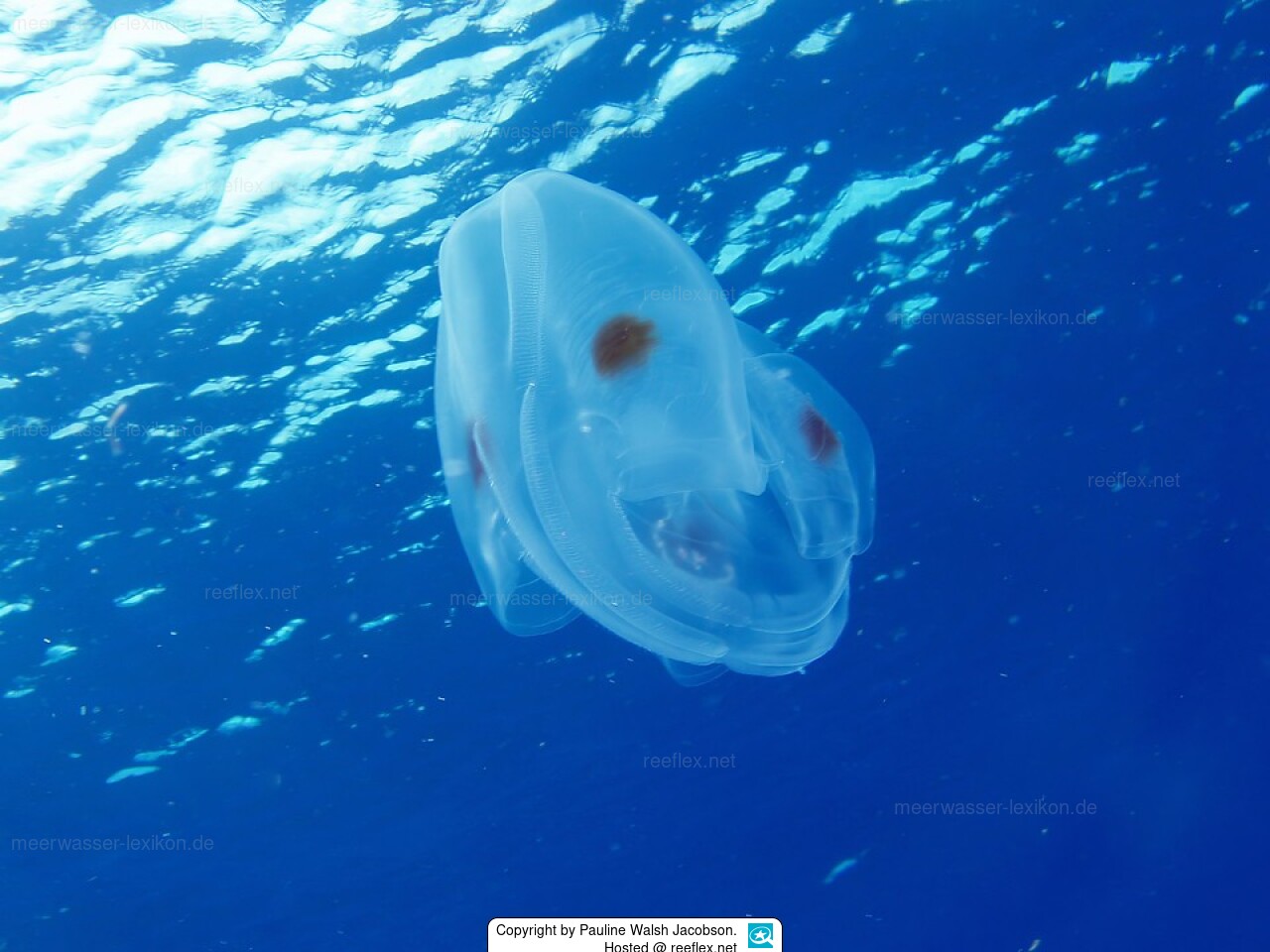Info
Ocyropsis maculata (Rang, 1827)
Ocyropsis maculata is a transparent ribbed jellyfish with four conspicuous brown spots on large, protruding mouth lobes.
Its body appears compressed, and the color of the lobes is whitish, translucent. Ocyropsis ribbed jellyfish prey on their large lobes, their diet is varied and includes other ctenophores, pteropods (Clione limacina), krill, and fish larvae. When disturbed, the jellyfish can swim away quickly by clapping their lobes together
The lobed ctenophores Ocyropsis maculata and Ocyropsis crystallina are not simultaneous hermaphrodites based on morphological, histological, and experimental evidence.
The sex ratio in populations, the sex ratio of size classes within populations, and the average sizes of males and females support the hypothesis that both species are dioecious and not sequential hermaphrodites.
The species of Ocyropsis, all of which have oceanic distributions, are likely descended from a common ancestor that was a simultaneous hermaphrodite.
That this group of oceanic ctenophores evolved dioecy directly contradicts the claim that there is a selective advantage to hermaphroditism in environments where the probability of finding a mate is reduced.
Synonymised names:
Ocyroe maculata Rang, 1827 · unaccepted
Direct children (2):
Subspecies Ocyropsis maculata immaculata Harbison & Miller, 1986
Subspecies Ocyropsis maculata maculata (Rang, 1828)
Ocyropsis maculata is a transparent ribbed jellyfish with four conspicuous brown spots on large, protruding mouth lobes.
Its body appears compressed, and the color of the lobes is whitish, translucent. Ocyropsis ribbed jellyfish prey on their large lobes, their diet is varied and includes other ctenophores, pteropods (Clione limacina), krill, and fish larvae. When disturbed, the jellyfish can swim away quickly by clapping their lobes together
The lobed ctenophores Ocyropsis maculata and Ocyropsis crystallina are not simultaneous hermaphrodites based on morphological, histological, and experimental evidence.
The sex ratio in populations, the sex ratio of size classes within populations, and the average sizes of males and females support the hypothesis that both species are dioecious and not sequential hermaphrodites.
The species of Ocyropsis, all of which have oceanic distributions, are likely descended from a common ancestor that was a simultaneous hermaphrodite.
That this group of oceanic ctenophores evolved dioecy directly contradicts the claim that there is a selective advantage to hermaphroditism in environments where the probability of finding a mate is reduced.
Synonymised names:
Ocyroe maculata Rang, 1827 · unaccepted
Direct children (2):
Subspecies Ocyropsis maculata immaculata Harbison & Miller, 1986
Subspecies Ocyropsis maculata maculata (Rang, 1828)







 Pauline Walsh Jacobson, USA
Pauline Walsh Jacobson, USA


